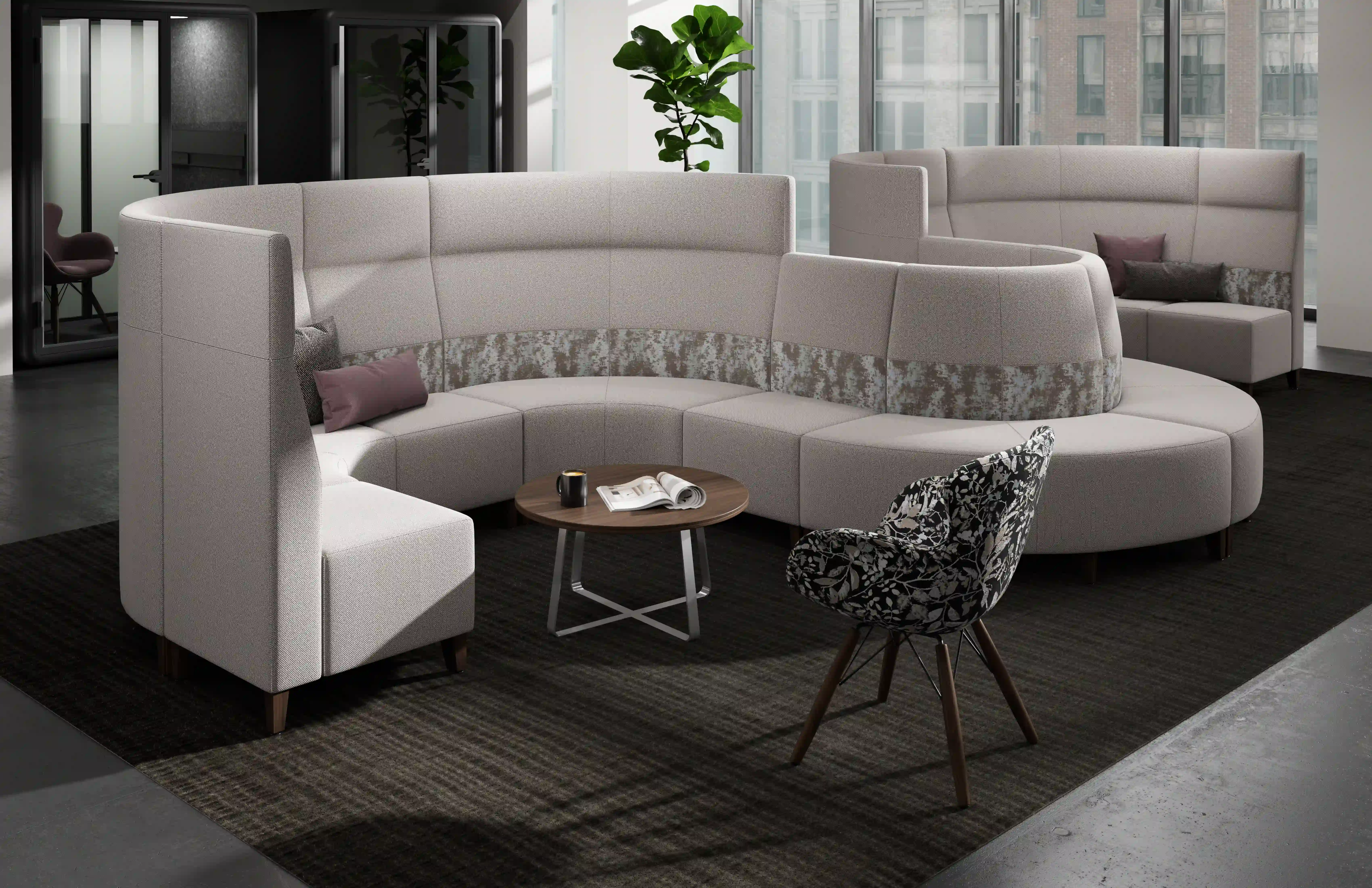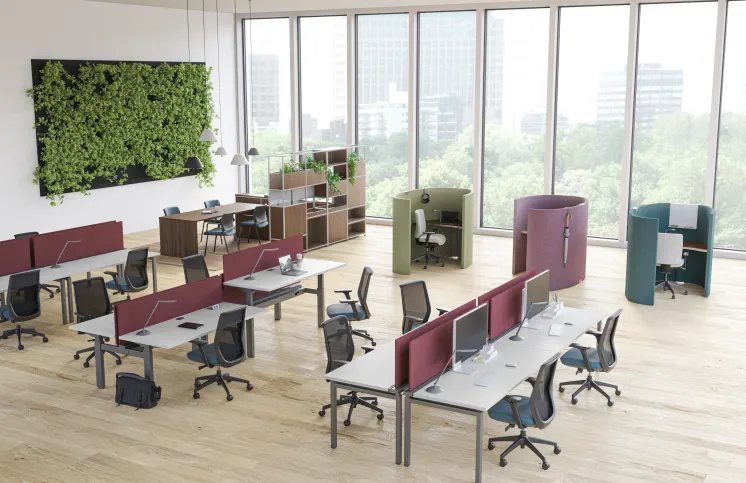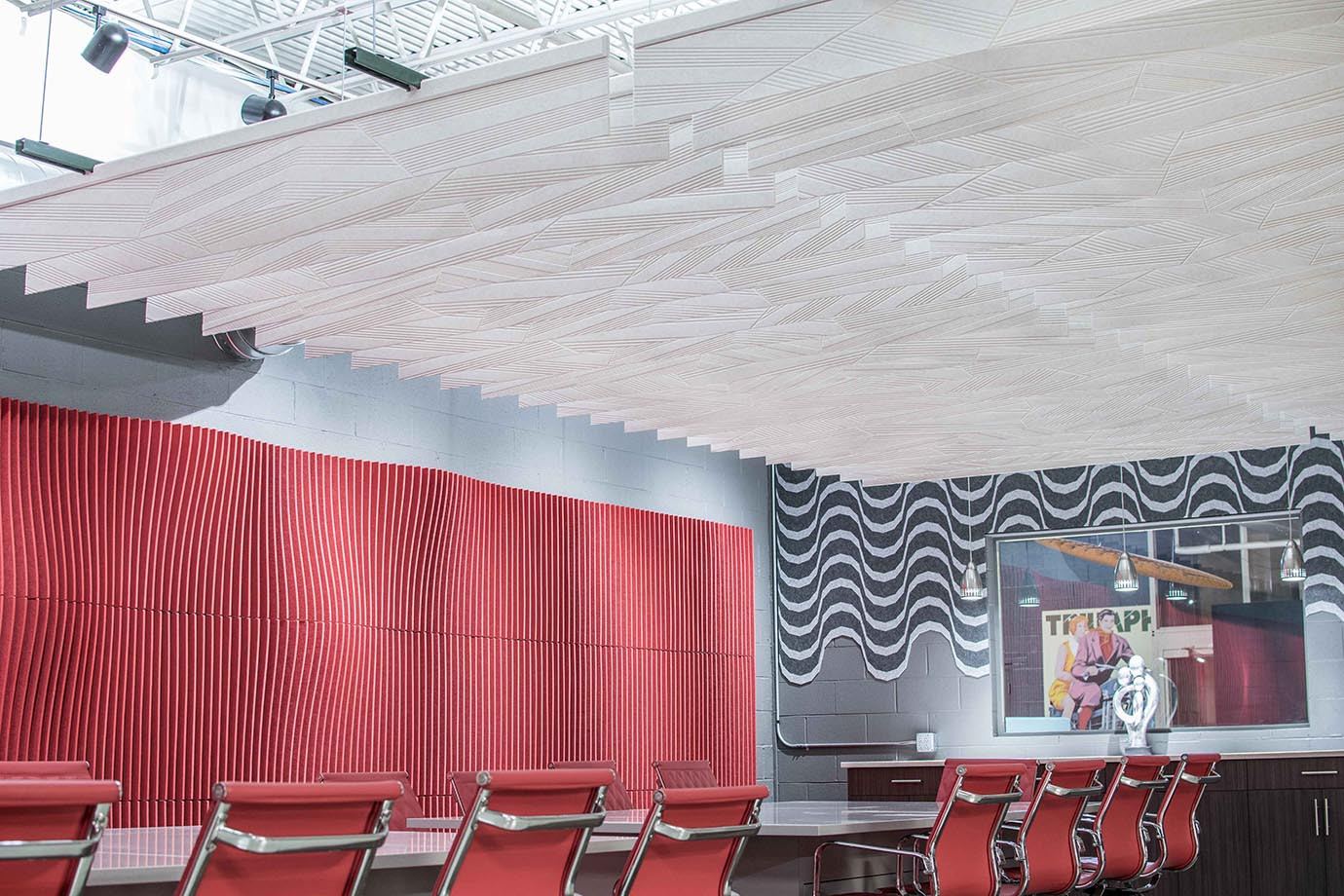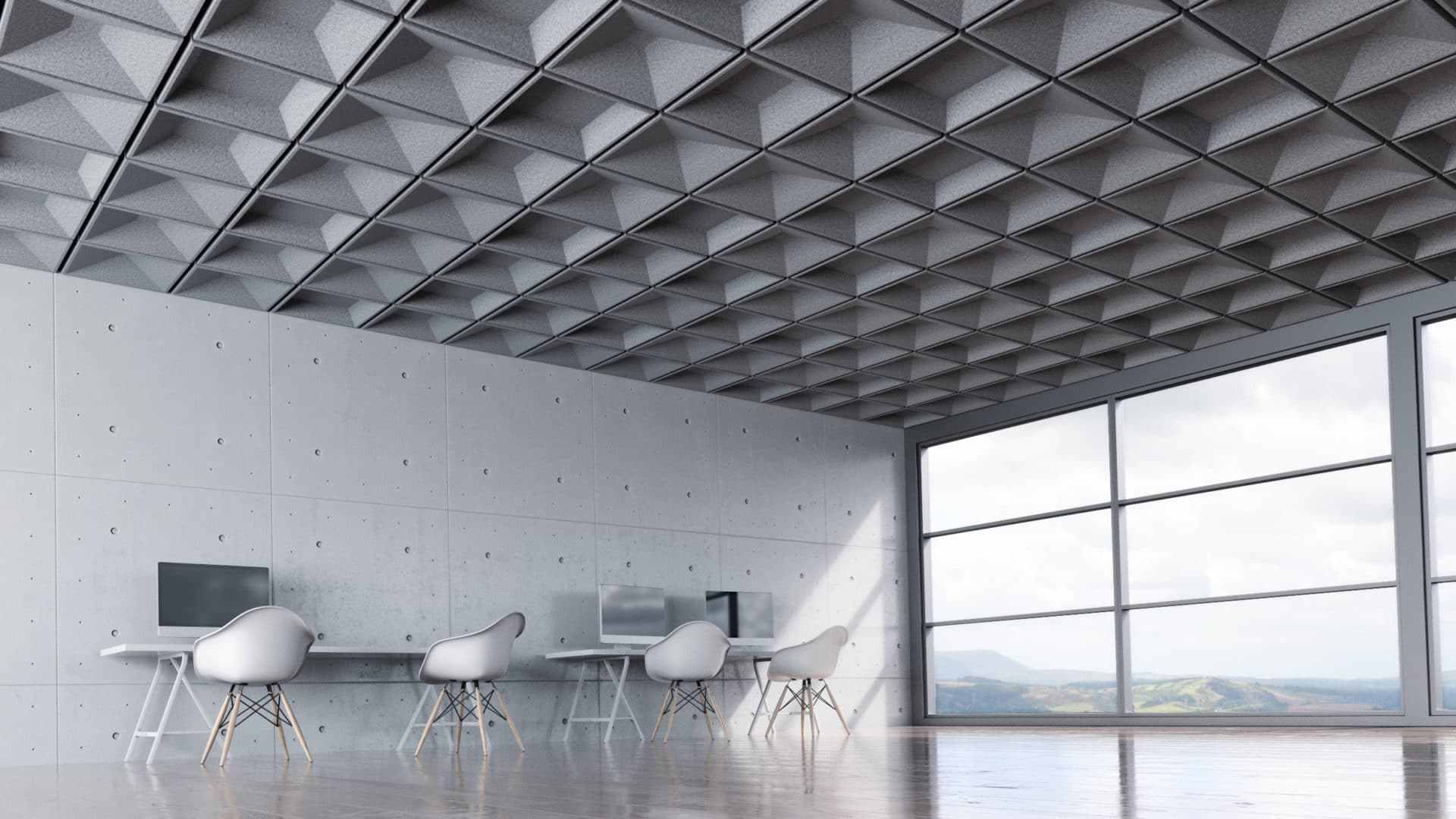In the era of open offices and constant connectivity, silence has become a luxury in the workplace. While these layouts are meant to encourage collaboration, they often come at the cost of concentration. Employees need a space where they can focus, think clearly, and occasionally hear their own thoughts. But how do you get there without gutting the space and starting from scratch?
1. Acoustic Furniture: The Unsung Hero of Office Sound Control


Noise-dampening furniture is one of the most powerful tools in your arsenal when designing a quieter workspace. Traditional office furniture often amplifies sound—think hard desks, bare chairs, and echo-prone spaces. Modern acoustic furniture, on the other hand, is designed to absorb sound and offer personal space in a shared environment.
What to look for:
- High-back lounge chairs: These create small personal sanctuaries and reduce both incoming and outgoing noise.
- Acoustic pods and booths: Perfect for phone calls, Zoom meetings, or quiet work, these structures offer nearly soundproof environments.
- Panel-back workstations: With fabric-wrapped partitions or sound-absorbing panels, even standard desks can promote focus.
These pieces are engineered using sound-absorbing materials like PET felt, foam cores, or layered textiles. By physically blocking and softening sound, they create “zones of silence” throughout the office.
Kimball’s Narrate or Villa collections, for example, offer beautiful, high-performance options that don't look like traditional cubicles—but work like them in terms of sound control.
Hard surfaces like concrete, glass, and metal—while sleek—amplify sound by reflecting it. Soft surfaces, in contrast, absorb sound waves. Incorporating soft materials throughout your office is an easy, affordable way to reduce echo and dampen overall noise levels.
Easy upgrades:
- Area rugs or carpet tiles: Especially effective in collaborative zones or break rooms.
- Upholstered furniture: Add softness to meeting areas, lounges, and lobbies.
- Wall-mounted acoustic panels: Modern designs now double as artwork.
- Curtains or fabric dividers: Ideal for glass conference rooms or open collaboration zones.
These surfaces also offer thermal insulation and can help with energy efficiency—an added benefit to your investment.
Design Tip: Use bold colors or geometric patterns in wall panels to combine function with flair.
3. Divide and Conquer with Mobile Partitions and Storage


Sound travels more freely in open spaces. Breaking up those spaces not only adds privacy and visual organization—it also helps to contain and control noise. You don’t need drywall to do it, either.
What works:
- Mobile partitions with acoustic backing
- Tall shelving units or bookcases
- Freestanding screens with felt or fabric panels
- Planter walls with built-in greenery and sound-absorbing features
These dividers don’t just stop sound; they guide behavior. By clearly defining work zones, you encourage quieter, more focused interactions in those areas.
According to studies from the Journal of Environmental Psychology, employees perform 66% better on cognitive tasks in quiet environments. Even psychological barriers like semi-opaque dividers can promote quieter behavior.
Sometimes noise isn’t about design—it’s about expectations. Establishing clear boundaries between collaborative and quiet zones can do wonders for productivity and morale. Best of all, it costs almost nothing.
How to implement:
- Use color coding or signage to label zones (e.g., “Focus Zone,” “Quiet Pod”).
- Create small areas with lounge seating and table lamps to cue calm.
- Reinforce policies like “no calls” or “heads-down hours” in these spaces.
- Include a mix of soft seating, laptop tables, or acoustic panels.
-
When employees know a space is meant for focus, they’re more likely to respect the noise level—and more likely to get meaningful work done there.
This approach is particularly effective when paired with modular furniture that supports flexible reconfiguration without structural changes.
If you want to reduce noise without touching your floors or walls, look up. Ceilings often go overlooked in acoustic design, but they offer prime real estate for sound control—especially in large or open offices.
Installations to consider:
- Ceiling baffles: Suspended panels that absorb sound vertically and horizontally.
- Acoustic clouds: Hanging panels designed to absorb ambient sound, particularly in open ceilings.
- Acoustic tiles: Modern drop-ceiling panels with noise-absorbing properties.
These installations don’t require rewiring or structural changes and are often installed quickly with minimal disruption.
Design edge: Many of these ceiling solutions come in a variety of colors, shapes, and patterns—meaning they can double as modern, eye-catching design features.
Greenery is not just good for the soul—it’s great for the soundscape. Natural elements like plants can absorb sound, break up visual monotony, and even improve indoor air quality. That’s a win-win-win.
How to integrate nature:
- Add large potted plants in open zones.
- Create living walls or moss panels in reception or quiet areas.
- Use planter-box partitions to separate workstations or hallways.
- Combine plants with acoustic dividers for a double-duty solution.
Studies show biophilic design can reduce stress, improve focus, and enhance employee satisfaction. And yes—those leafy giants actually do absorb sound.





